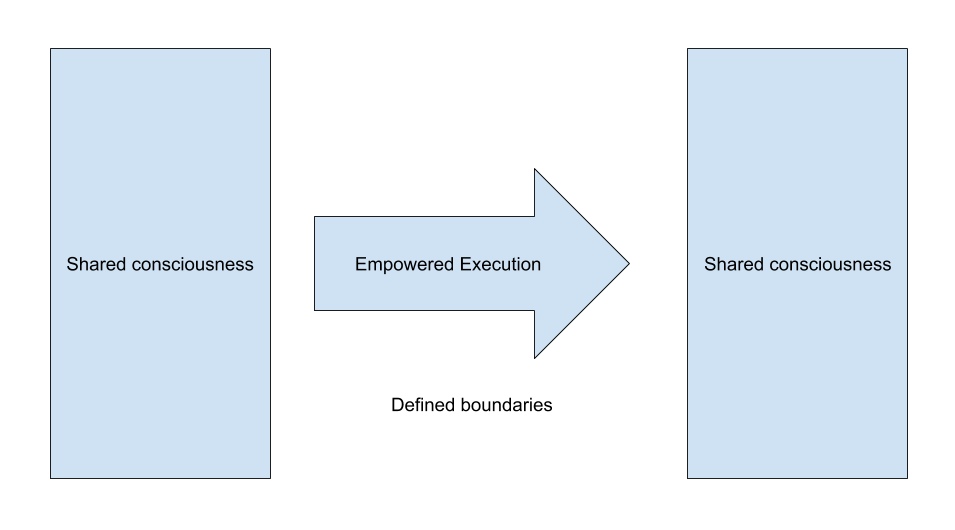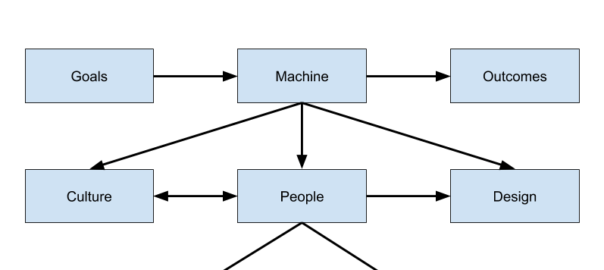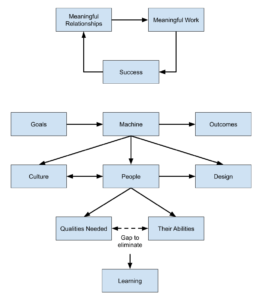 Good Strategy Bad Strategy: The Difference and Why It Matters by Richard P. Rumelt
Good Strategy Bad Strategy: The Difference and Why It Matters by Richard P. Rumelt
My rating: 4 of 5 stars
A strategy is a pathway to substantially higher performance.
- The first advantage of a good strategy is that others fail to have a strategy
- Good strategy tends to come from insight into an organisations strengths and weakness
- Bad strategy
- Fluff – the illusion of thinking. True expertise and insight is making a complex subject understandable.
- Failure to face the challenge – you need to identify the challenge or opportunities, analyse obstacles/bottlenecks to overcoming this then formulate a plan to overcome them. Good strategies are not quick – e.g. “improve underperformance” is not a challenge – underperformance is an outcome, the true challenge is the reason for the under performance. Good strategy is choosing which challenges are both worthy of pursuing and capable of being accomplished – if you don’t have a competitive advantage, don’t compete.
- Mistaking goals for strategy – many strategies are a statement of desires rather than a series of actions or policies to overcome obstacles. Business is not simply a battle of strength and will, but also competition on insight and competencies.
- Bad strategic objectives (subgoals) – effective senior leaders don’t choose arbitrary goals, they critically decide which goals are worthy of pursuing. Goals being overall desires and objectives being specific operational targets.
- The kernel of good strategy
- A diagnostic of the challenge – taking the complexity of the situation and identifying the critical aspects. Understanding “What’s going on here?”. Growth is not a strategy – growth by itself does not create value, growth is the outcome of growing demand for special, expanded or extended capabilities, the outcome of superior products or skills, reward for successful innovation, cleverness, efficiency and creativity.
- A guiding policy – how to cope with or overcome the diagnosed challenge, using the specific sources of power:
- Leverage
- Anticipation – others expected behaviors, especially rivals – this is not some “high, medium, low” forecast but understanding what others would do in these situations e.g. if the price is high then others will try to enter the market
- Pivot points – a natural or created imbalance e.g. pent up demand or competence in one field which can be applied to another
- Concentration – rising from constraints and threshold effects e.g. the constraint on advertising budget and the threshold effect of TV advertising meaning that a small amount continuously is much less valuable than a lot in a short time.
- Proximate objectives – a target that the organisation can reasonably hit. This resolves ambiguity, where the situation is volatile the objective must be more proximate to achieve it.
- Chain-link systems – strengthening any link but the weakest will not strengthen the chain as a whole
- Using design
- Premeditation – a plan in advance, “winging it” is not a strategy
- Anticipation – a judgement of others thoughts and behaviours
- Design of Coordinated action – a strategy is designed with capabilities, not just making a decision. This design should provide powers derived from interacting and overlapping effects focused against a target.
- Competitive advantage –
- If you can produce at a lower cost than competitors or deliver more perceived value (or a mix of the two).
- Subtlety arrives because costs vary with product and application, buyers differ in their locations, knowledge, tastes, and other characteristics – so an advantage only goes so far.
- It must be hard for others to replicate to stay isolated.
- Competitive advantage does not mean financial gain. An interesting advantage is one where you can increase its value on your own.
- deepening the advantages – increase value to buyers or reduce cost (or both)
- broadening the extent of advantages – taking the advantage to new fields
- creating higher demand for advantaged products or services – either though more buyers or more demand from each buyer
- strengthening the isolating mechanisms that block easy replication and imitation by competitors
- Changes in the environment
- Rising fixed costs – might cause the industry to consolidate
- Deregulation – incumbents find it hard to adapt to the new world
- Predictable bias – people tend to think there is infinite growth, but there is a peak and this is important to identify
- Incumbent response – they are resistant and slow to change because of inertia and entropy.
- Inertia of routine, culture and proxy (as in their current customers what what you currently sell so there is no desire to cannibalise yourself)
- Entropy (gradual decline into disorder) e.g. product line bloat, keeping unprofitable stores etc
- Attractor states – what is the direction of the market, you might not like it but resisting will be worse
- Leverage
- A set of coherent actions – steps which together will accomplish the guiding policy
 Product Management in Practice
Product Management in Practice The Advantage: Why Organizational Health Trumps Everything Else in Business
The Advantage: Why Organizational Health Trumps Everything Else in Business It’s the Manager
It’s the Manager Nonviolent Communication: A Language of Life
Nonviolent Communication: A Language of Life HBR Guide to Making Every Meeting Matter
HBR Guide to Making Every Meeting Matter Empowered: Ordinary People, Extraordinary Products
Empowered: Ordinary People, Extraordinary Products One Mission: How Leaders Build A Team Of Teams
One Mission: How Leaders Build A Team Of Teams

 Principles: Life and Work
Principles: Life and Work
 HBR’s 10 Must Reads on Leadership
HBR’s 10 Must Reads on Leadership